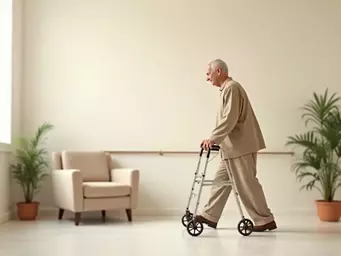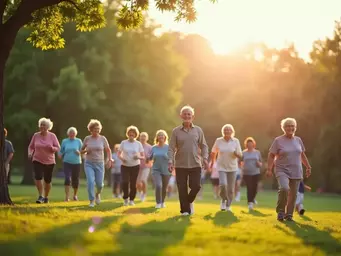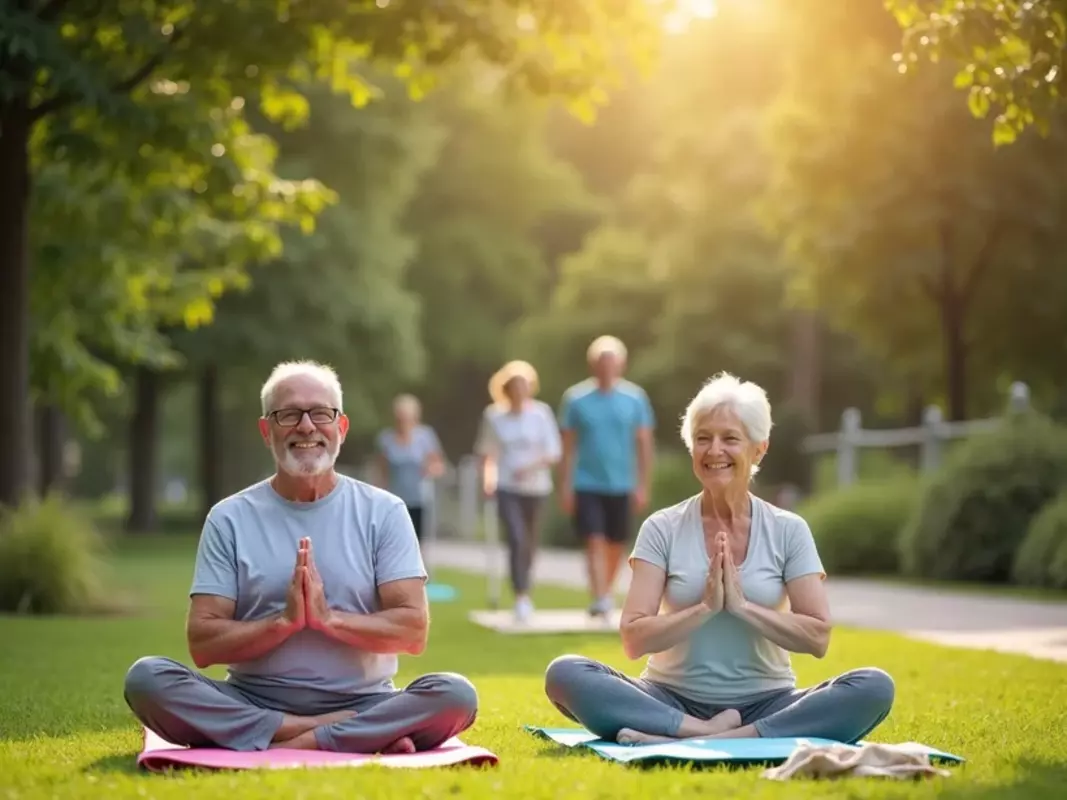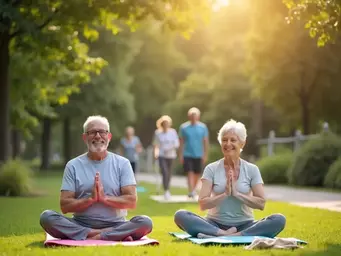Physical Activity for Healthy Aging
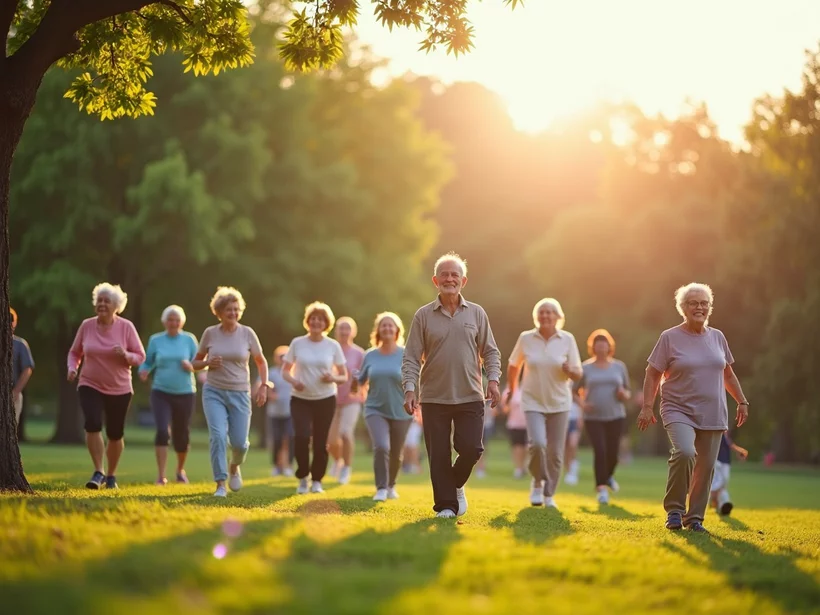
As we age, the choices we make can significantly impact our quality of life. Engaging in regular physical activity isn't merely about adding years to our lives; it's about adding life to our years. It’s time to discover how movement can empower us to thrive as we age!
Key Takeaways
- Regular physical activity enhances cardiovascular health, strength, flexibility, and balance, leading to a more fulfilling life.
- Healthy aging involves a holistic approach, including social engagement, cognitive function, and proper healthcare.
- Exercise acts as a powerful form of self-care, improving mental health and helping to fend off chronic diseases.
- Overcoming barriers to activity, such as physical limitations or lack of motivation, is crucial for older adults to maintain an active lifestyle.
- Community resources and wellness programs can provide vital support, making exercise enjoyable and a social activity.
- Functional fitness is important for maintaining the ability to perform daily tasks with ease and confidence.
- Setting achievable goals and tracking progress can help build motivation and foster a supportive environment for exercise.
Key Benefits of Physical Activity for Healthy Aging
The following visual highlights the essential benefits of regular exercise for older adults, showcasing its impact on various aspects of health and well-being.
Improved Cardiovascular Health
Regular physical activity strengthens the heart, lowers blood pressure, and improves circulation, reducing the risk of heart disease.
Enhanced Strength and Flexibility
Engaging in strength training and flexibility exercises helps maintain muscle mass and joint health, essential for mobility.
Better Balance and Coordination
Physical activity improves balance and coordination, reducing the risk of falls and related injuries.
Boosted Mood and Mental Clarity
Regular exercise promotes emotional wellness, reduces anxiety, and enhances cognitive function, contributing to overall mental health.
The Importance of Physical Activity in Promoting Healthy Aging
As we reflect on the journey of aging, the value of physical activity cannot be overstated. It's a key ingredient that contributes to not just living longer, but living well! At Cairns Active Ageing Solutions, I often share the mantra that keeping active is essential for maintaining our independence and vitality as we grow older. For more insights on staying independent, consider reading about staying independent with active aging.
But what does healthy aging really mean? It goes beyond simply avoiding illness; it encompasses a holistic approach to maintaining physical, mental, and emotional well-being. By understanding and embracing this concept, we can truly enhance our quality of life as we age.
Understanding the Benefits of Exercise for Older Adults
Exercise is not just about lifting weights or running marathons; it’s about embracing movement in ways that fit our lifestyles. Regular physical activity offers a treasure trove of benefits for older adults, including:
- Improved cardiovascular health
- Enhanced strength and flexibility
- Better balance and coordination
- Boosted mood and mental clarity
These benefits collectively contribute to a more fulfilling life. Imagine participating in your favorite activities—whether that’s gardening, walking on the beach, or dancing with friends—without feeling fatigued or unsteady. That’s the power of staying active!
Defining Healthy Aging and Its Implications
Healthy aging means maintaining the ability to live a full, vibrant life. It involves not just the absence of disease but the presence of vitality. As I engage with seniors in Cairns, I emphasize that healthy aging also includes:
- Having a social support network
- Maintaining cognitive function
- Staying active and engaged in hobbies
- Accessing proper healthcare and nutrition
By focusing on these aspects, we can ensure that seniors lead lives filled with purpose and joy. For practical tips, explore practical tips for independent living.
Why Physical Activity is Key to Healthy Aging
The truth is that regular physical activity plays a pivotal role in achieving healthy aging. It helps to fend off chronic diseases, manage weight, and improve mental health. Think of it as a form of self-care that pays off significantly over time!
One simple way to incorporate more movement into daily life is to set achievable goals. Consider starting with just 10 to 15 minutes of exercise each day and gradually increasing as you feel more comfortable. Little steps can lead to incredible transformations!
The Role of Exercise in Longevity and Quality of Life
When we talk about longevity, it’s essential to understand the rich relationship between exercise and a fulfilling life. Studies show that active individuals tend to live longer and experience fewer health issues. Here are some of the ways exercise boosts both longevity and quality of life:
- Strengthens the heart and improves circulation
- Increases overall energy levels
- Enhances sleep quality
- Promotes emotional wellness and reduces anxiety
As a passionate advocate for active ageing, I can’t stress enough how vital it is to prioritize these health benefits. Engaging in physical activity can be a fun and social way to connect with others while enhancing your well-being!
Impact on Cardiovascular Health and Disease Prevention
One of the most significant benefits of exercise is its positive impact on cardiovascular health. Regular physical activity strengthens the heart, lowers blood pressure, and improves circulation. This not only reduces the risk of heart disease but also enhances overall vitality.
Incorporating heart-healthy activities like walking, swimming, or dancing into your routine can lead to remarkable health improvements! Remember, every little bit counts—so find something you enjoy and make it part of your life.
Enhancing Muscle Strength, Flexibility, and Balance
As we age, our muscle mass tends to decrease, which can lead to weakness and falls. That’s why it's critical to focus on exercises that enhance muscle strength, flexibility, and balance. Activities like:
- Resistance training
- Yoga or Pilates
- Balance exercises like tai chi
These practices not only improve physical stability but also boost confidence, allowing us to move through life with ease. At Cairns Active Ageing Solutions, we encourage seniors to explore these activities and find what makes them feel strong and capable! For comprehensive guidance, you might find our article on ensuring home safety for seniors particularly helpful.
Did You Know?
According to the World Health Organization, regular physical activity can reduce the risk of chronic diseases by up to 30% in older adults. This makes exercise not just beneficial but essential for maintaining health and longevity as we age!
Addressing Common Concerns and Questions About Aging and Physical Activity
As we delve into the world of healthy aging, it's essential to recognize and address the common concerns that many older adults have about physical activity. Often, these concerns can create barriers that prevent seniors from engaging in exercise. At Cairns Active Ageing Solutions, we understand these challenges, and we're here to provide support and solutions that empower older adults to embrace an active lifestyle!
In this section, we'll explore some prevalent questions and barriers that seniors might face and offer guidance on how to overcome them. Remember, every step towards physical activity is a step towards better health and happiness!
Overcoming Barriers to Physical Activity in Older Adults
Identifying the barriers to physical activity is the first step in overcoming them. For many seniors, these barriers may include physical limitations, lack of motivation, or simply not knowing where to start. Here are some common barriers we see:
- Physical limitations or chronic pain
- Lack of access to appropriate facilities or programs
- Fear of injury or falling while exercising
- Social isolation or lack of support from others
Building motivation and social support is crucial for older adults to stay active. Engaging with friends or joining a community group can make a significant difference. Consider activities that you enjoy, and don’t hesitate to reach out for encouragement! Connecting with local wellness programs can also provide a structured path to physical activity. For a deeper dive into embracing an active lifestyle with others, check out embracing active ageing together.
Identifying Cultural and Demographic Differences
Cultural and demographic differences can influence attitudes towards exercise. For instance, some communities may prioritize leisure activities over structured exercise. It's important to respect these values while encouraging physical activity that aligns with their interests. Finding common ground can lead to more effective engagement in exercise.
Consider these approaches to address cultural differences:
- Incorporate familiar activities into exercise routines
- Offer programs that reflect community interests
- Encourage family involvement in physical activities
Building Motivation and Social Support for Exercise
Motivation is key to maintaining an active lifestyle! Surrounding yourself with supportive friends or family members can create a positive environment that encourages physical activity. Here are some strategies to help build motivation:
- Set realistic and achievable goals
- Track your progress to see improvements
- Celebrate small milestones with friends or family
At Cairns Active Ageing Solutions, we believe that sharing successes in a supportive community can lead to lasting positive change!
Community Resources and Wellness Programs for Seniors
There are numerous community resources and wellness programs available for seniors looking to stay active. These programs often focus on gentle exercises, social gatherings, and skill-building activities. Here are some examples:
- Local senior centers offering fitness classes
- Walking groups for safe outdoor exercise
- Yoga and tai chi classes tailored for older adults
Taking advantage of these resources can create a sense of belonging and camaraderie, making exercise not just beneficial but also enjoyable!
FAQs on the Benefits of Physical Activity for Aging Well
Many older adults have questions regarding how much exercise is appropriate for their age group. It's crucial to clarify these FAQs to help guide seniors in their fitness journeys. Here are some frequently asked questions:
- Q: What are the main benefits of physical activity for older adults?
- A: Regular physical activity significantly improves cardiovascular health, enhances muscle strength and flexibility, boosts balance and coordination (reducing fall risk), and promotes better mood and mental clarity.
- Q: How much exercise do older adults need each week?
- A: Public health guidelines recommend at least 150 minutes of moderate-intensity aerobic activity per week. This can be broken down into shorter, manageable sessions throughout the day or week.
- Q: What types of activities are best for seniors?
- A: A combination of aerobic activities (like walking, swimming, cycling), strength training (bodyweight or resistance bands), and flexibility/balance exercises (such as yoga or tai chi) is ideal. The best activities are those you enjoy and can stick with.
- Q: What is functional fitness and why is it important for aging well?
- A: Functional fitness focuses on exercises that improve your ability to perform daily tasks with ease and confidence, such as lifting groceries, bending, or climbing stairs. It's crucial for maintaining independence and quality of life as you age.
- Q: How can older adults overcome barriers to physical activity?
- A: Overcoming barriers involves identifying specific challenges (e.g., pain, lack of motivation), finding suitable and accessible programs, seeking social support, and starting with small, achievable goals. Consulting a healthcare professional before starting new routines is also recommended.
How Much Exercise Do Older Adults Really Need?
Public health recommendations suggest that older adults aim for at least 150 minutes of moderate-intensity aerobic activity each week. This can be broken down into manageable chunks, making it easier to fit into daily routines. Remember, even small amounts of activity add up!
What Types of Activities Are Best for Different Age Groups?
Different age groups may benefit from different types of activities. Here are some suitable options:
- Aerobic activities: walking, swimming, or cycling
- Strength training: bodyweight exercises or resistance bands
- Flexibility exercises: yoga or stretching routines
It's essential to choose activities that you enjoy—this will keep you motivated and engaged!
Understanding the Importance of Functional Fitness
Functional fitness focuses on exercises that improve daily activities. This type of training is especially beneficial for older adults, as it enhances the ability to perform everyday tasks with ease and confidence. Incorporating functional movements like squats or lifting objects can make a significant impact on overall quality of life. Learn more about the physical activity benefits for seniors.
Summarizing the Essential Benefits of Physical Activity for Aging Well
As we wrap up this discussion, it's clear that physical activity plays an essential role in promoting healthy aging. With the right mindset and support, older adults can enjoy a vibrant lifestyle that includes regular physical activity!
Key Takeaways on Physical Activity and Healthy Aging
Here are the key takeaways on the importance of staying active as we age:
- Regular exercise boosts physical and mental health.
- Social engagement through activity enhances well-being.
- Finding community resources can provide vital support.
Encouraging Lifelong Engagement in Physical Activity
Emphasizing the long-term benefits of physical activity can encourage older adults to maintain an active lifestyle. By focusing on enjoyment and community support, seniors can create lasting habits that lead to better health and happiness!
Promoting Overall Well-Being and Quality of Life
Ultimately, our goal at Cairns Active Ageing Solutions is to help seniors thrive. Regular physical activity not only enhances health but also enriches life satisfaction and joy. So, let’s keep moving together!
Call to Action: Start Your Journey to Healthy Aging
Are you ready to embrace a more active lifestyle? Here are some practical steps to get started:
- Set a weekly exercise goal—start small!
- Explore local community programs suited for seniors.
- Invite a friend to join you in your fitness journey!
Remember, every little bit counts! If you need support or resources, don’t hesitate to reach out to us at Cairns Active Ageing Solutions. Together, we can make healthy aging a reality!
Recap of Key Points
Here is a quick recap of the important points discussed in the article:
- Regular physical activity is crucial for maintaining independence and vitality in older adults.
- Exercise improves cardiovascular health, strength, flexibility, balance, mood, and mental clarity.
- Healthy aging encompasses physical, mental, and emotional well-being, along with social engagement and proper healthcare access.
- Setting achievable goals for physical activity can lead to significant health improvements over time.
- Community resources and social support greatly enhance motivation and the likelihood of maintaining an active lifestyle.
- Functional fitness exercises are essential for improving daily activities and overall quality of life in older adults.
